Hoyas are stunning indoor plants that have lush, vibrant green foliage that look stunning in a hanging basket. When these plants bloom, it produces a sweet perfume-like aroma that fills your home. Hoya plants are not difficult to care for, but they do have some specific requirements that they need to thrive. Making sure to follow a Hoya plant care guide will help improve your chance of success with growing this plant.
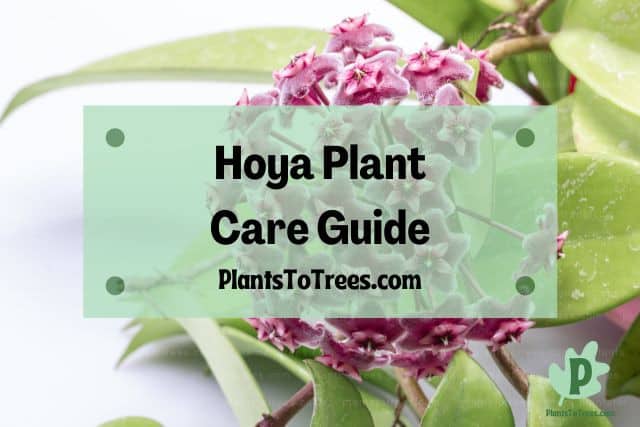
The Hoya plant care guide provides all the info needed to grow this tropical houseplant, including its humidity level and watering requirements. You will also learn what diseases to look out for, and whether the plant poses a risk to your family.
Hoyas are tropical plants that need mild and warm winters if grown outside. This plant is most often grown as a houseplant, however, because most people do not live in an area where the weather is warm year round. No matter where you grow this plant, you will need to ensure it has the proper care.
The Hoya plant needs temperatures that are at least 60 degrees Fahrenheit with moderate humidity. In most cases, your current household temperature and humidity will work fine for the Hoya plant. In the winter, however, or when the air is particularly dry, you should consider trying to bring the humidity levels up a bit. While most Hoyas do well in 50% humidity, some varieties need a bit higher levels. Using a drip tray or a humidifier works well to get humidity a little bit higher for the Hoya plant.
Like other houseplants, they are susceptible to overwatering, which can lead to root rot. Overwatering any plant, not just the Hoya, will quickly cause serious and potentially fatal problems for your plant. While overwatering is extremely common, it is also very preventable, and the Hoya plant care guide will tell you exactly how to prevent this disease.
Even though they are fairly easy to take care of, having a Hoya plant care guide will help you prepare for any potential problems you may face.
Other Names Of Hoya Plant
Most plants are known by at least one or two aliases, and the Hoya is no exception. In fact, this plant is known by at least 3 other names.
Hoya plants are known by various other names, including waxflower, waxplant, and waxvine. This plant was named by Robert Brown, who was a botanist. He named the hoya plant after another botanist and his friend, Thomas Hoy.
Knowing what other people call this plant can help you better connect with other gardeners who are growing the Hoya plant.
Frost Tolerance And USDA Hardiness Zones Of Hoya Plant
USDA hardiness zones provide important information for gardeners, especially if you are thinking about growing the Hoya plant outdoors. This info will let you know what areas in the United States that it is safe to grow the plant outdoors.
Like most other tropical houseplants, the hoya plant can grown outdoors in USDA hardiness zones 9 to 11. In fact, these plants can handle temperatures that drop to 20 degrees Fahrenheit. With that said, they do best when they grow in 60 to 85 degrees with a humidity level of about 50%.
Even if you are outside the USDA hardiness zones for the Hoya plant, you can still take it outside during warm weather. This is a great way to let your plant have some fresh air. Make sure, however, that you do not let the plant stay outside wen the temps start to drop to below 60 degrees, and keep it out of direct sunlight. Additionally, avoid leaving the plant outside in heavy rains or winds as this can damage the plant and its foliage.
How Many Hours Of Sunlight Does Hoya Plant Need
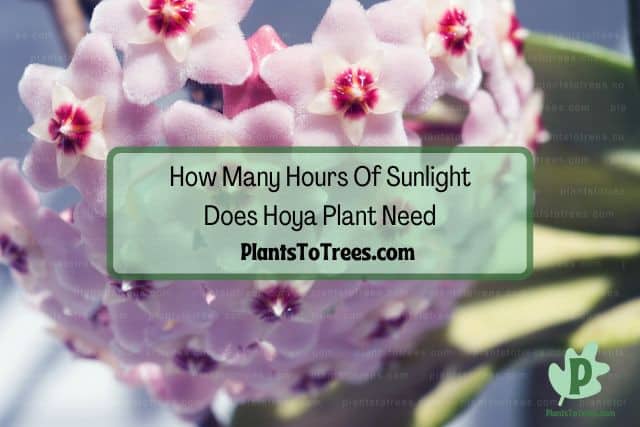
Sunlight is important for the growth, as well as the overall health, of the Hoya plant. After all, sunlight is what is needed for the plant to maintain its green leaves. But it can also cause problems if the plant gets too much sunlight or not enough of the right type of sunlight.
Hoya plants typically burn in direct sunlight, but thrive when they have medium to bright sunlight that is indirect. If they are exposed to too much sun, their leaves can burn and start to turn yellow. There are, however, some species of hoya plants that can tolerate lower levels of light.
Remember that if you cannot provide the Hoya plant with this amount of sunlight, naturally simply get some grow lights. There is nothing wrong with supplementing the plant’s lighting needs with artificial lights. In fact, it is a common practice, especially for plants that need an abundance of sunlight hours.
Hoya Plant Needs Direct Or Indirect Sunlight?
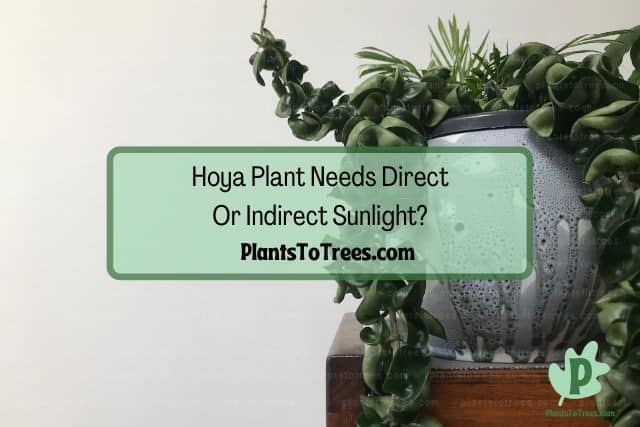
Not all sunlight is created equally. Direct and indirect sunlight, for example, may sound like the same thing, but they are two vastly different types of sunlight. Knowing which one the Hoya plant needs is vital for the plant’s health.
Most Hoya plants need bright, indirect light for the best results. An ideal indoor location for hoyas is a few feet away from a bright window. Keeping them back away from the windows a bit will prevent them from becoming damaged by the hot glass and direct sunlight.
If you notice the plant leaves are starting to develop scorching or burning it means the sunlight the plant is receiving is direct. Try moving the plant to another area away from the window, or place a sheer curtain between the window and the plant to diffuse the light.
Is Hoya Plant An Indoor Plant, Outdoor Plant Or Both?
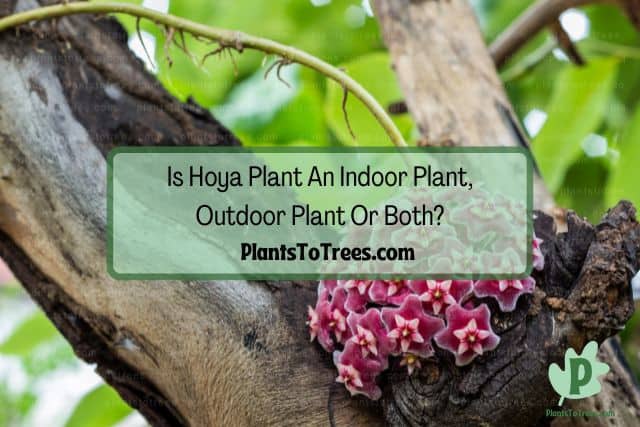
While the Hoya plant is technically both an indoor and outdoor plant, that doesn’t mean it can successfully grow outdoors in any climate.
Hoyas are most commonly grown indoors as a houseplant. This is because most areas do not have the year round warm temperatures and mild weather that hoyas need. For those who live in USDA hardiness zones 9 to 11, you can plant the hoyas outdoors.
Indoor hoyas can also be moved outdoors on warm summer days. Just make sure to bring the plant back inside before temperatures start to drop below 60 degrees.
If you do take your plant outside for a bit, make sure to protect it from the elements, such as heavy rain and strong winds, as these could damage the plant. Putting the Hoya plant on a covered porch, for example, would allow it to enjoy the outdoors while also being safe from the elements.
What Are The Indoor Lighting Requirements for Hoya Plants?
For tropical houseplants such as the Hoya plant, trying to recreate its native habitat inside can be a difficult task. While you may not be able to get every aspect of the tropics that Hoya plants are used to, you can recreate the ideal lighting requirements for it.
Hoyas do their best when they are grown in a bright area out of direct sunlight. Because they can tolerate some lower light levels, they are often confused with low-light plants. The truth is, these plants need an abundance of indirect light for ideal growth.
What Are The Outdoor Lighting Requirements for Hoya Plants?
Most people won’t grow their Hoya plants outside, but if you live in an area where the climate is warm and mild in the winter, you may be able to successfully grow this plant in the ground.
As with growing this plant indoors, the hoya plant will need as much indirect sunlight as possible. Planting the hoya in an area where the sunlight is filtered by tree leaves or another structure is a good choice.
What Soil Requirements Does a Hoya Plant Need?
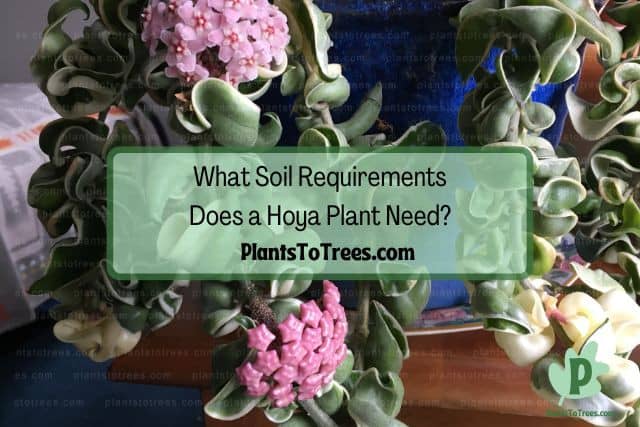
Most plants don’t do well in soil that is compact. But that doesn’t mean all houseplants require the same soil requirements. But what type of soil does the Hoya plant need?
Hoyas need light, airy potting soil that allows for soil to drain through. Mixing equal parts perlite, orchid mix, and cactus mix is a good choice for this plant’s growing medium. Hoyas also like to be crowded or pot-bound and will only need to be repotted every three years or so.
How Much Water Does Hoya Plant Need?
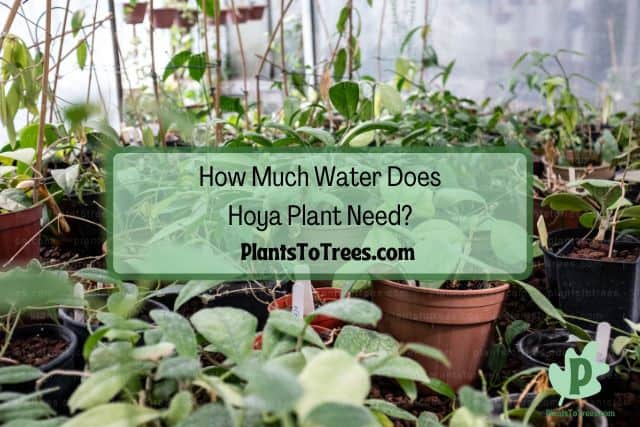
Even though Hoya plants don’t need an over abundance of water, they still need to be hydrated every so often. Knowing when to water this plant will help reduce the chance of overwatering it.
Hoya plants are not heavy drinkers, and will only need watered about once every week during the summer months. The amount of watering is typically reduced to once every 2 weeks during the winter months. It is important to allow the hoya plant’s soil to dry out a little between waterings.
It is better to underwater a Hoya plant than it is to overwater it. If you are unsure as to whether or not your Hoya needs water, do the soil moisture level test. All this requires is touching the top of the soil and carefully inserting the tip of your finger into the dirt. If it feels moist, the plant doesn’t need any more water at this time.
Is My Hoya Plant Overwatered, What Are The Symptoms?
Overwatering a plant is one of the quickest ways to kill it, and Hoya plants are no different. Because it is a succulent, hoyas can go longer than some other plants without any water. In fact, watering them as much as you water your other nonsucculent houseplants could pose a serious threat to the Hoya plant.
Like other succulents, hoyas don’t require a lot of water and giving them too much can actually threaten the life of the plant. The most common symptoms of overwatering include yellowing leaves that fall off the plant. Buds can also fall off before they have flowered.
Other signs of overwatering include soggy soil, leaves turning brown or black, an unpleasant odor coming from the hoya plant, and insect infestation. If not corrected, the overwatering will lead to fungal diseases, such as root rot, and it will eventually kill the hoya plant.
Hoya plants that show mild signs of overwatering typically recover by simply allowing the plant’s soil to dry out before you water it again. In extreme overwatering cases, the hoya plant may be too far gone. This is especially true if root rot has already taken hold of the plant.
If the plant has been overwatered for a while, you can try to save it by removing the plant from its pot and getting rid of all the soil. You will then have to examine the roots, and remove any that are brown or damaged. Brown roots are typically diseased or dead. Healthy roots will be white. After you have removed all the bad roots, the Hoya plant can then be repotted into a clean pot filled with fresh soil. You should wait several days before trying to water the plant again.
Remember that even after all of that, your Hoya plant may be too far gone to bring back from root rot. You may have to trash the plant and try again.
Is My Hoya Plant Underwatered, What Are The Symptoms?
Underwatering a Hoya plant can be a difficult task to accomplish since these succulents can thrive without water for longer than other types of plants.
Since hoya plants don’t need an abundance of water, it can take a little longer for damage to occur due to underwatering. But when it does, it will start at the plant’s tips and move inward. An underwatered hoya plant will have brown, crispy tips and the leaves will appear shriveled.
While you should never purposely underwater the Hoya plant, you can typically save the plant even if it has been underwatered for some time. However, you cannot merely pour water on the top of the soil since the overly dry soil won’t be able to absorb the water. The water will instead just pool on the top of the soil or roll right off.
What you can do, however, is fill a bucket that is large enough to hold the Hoya plant and its container with water and then submerge the Hoya plant, container and all, into the water. Allow the Hoya to soak for a good 30 minutes before removing it from the water. This soaking will give the extremely dry soil enough time to absorb the water slowly and get hydrated once again.
How Much Fertilizer Does Hoya Plant Need?
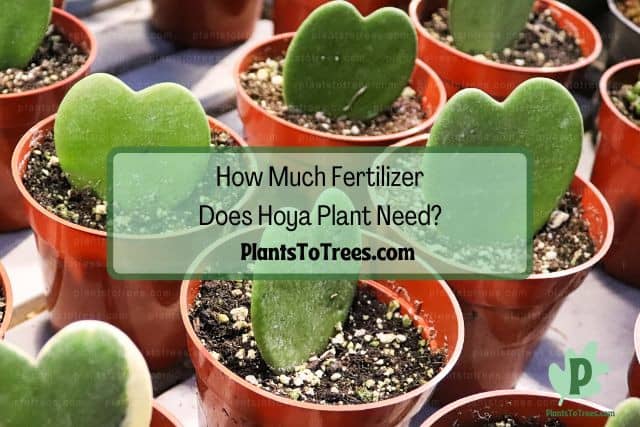
Fertilizing a Hoya plant will help encourage healthy and strong growth. Even though this plant isn’t a heavy feeder, a little fertilizer every so often will help improve your hoya’s overall health.
We at Plants To Trees first published this article on August 22, 2022. Copyright protected.
Hoyas are foliage plants, so they need a fertilizer that has a higher nitrogen content, such as 2:1:2. If the hoya plant is flowering, however, you will want to use a fertilizer that has a higher phosphorus content, such as 5:10:3. This will help promote blooming.
For best results, read and follow the directions found on the fertilizer bottle. While you can reduce the application amount listed on the bottle, avoid increasing this amount as it can lead to severe damage to your plant.
Hoya Plant Diseases To Be Aware Of
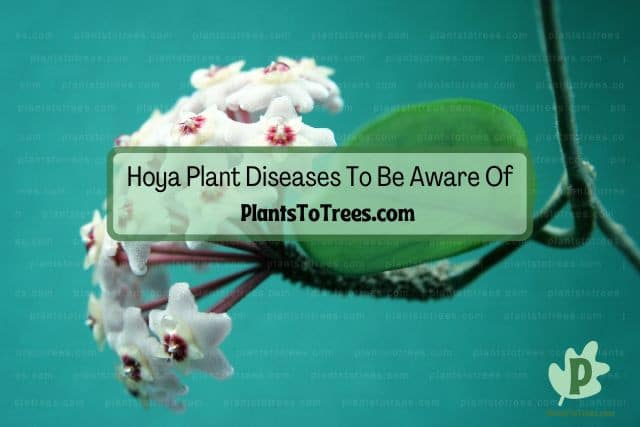
One of the great things about Hoyas is that they are pretty easy-going plants that don’t have too many problems. That doesn’t mean it cannot experience any diseases, however. But knowing what diseases it could get goes a long way to keeping them at bay.
Hoya plants don’t have too many diseases to worry about, except for sooty mold. Sooty mold forms when the plant leaks sticky sap, which encourages the growth of the mold. It can also be caused by aphids, which produce honeydew.
Honeydew is a sticky substance the aphids secrete when they are feeding on plants. Like sap, the honeydew encourages the growth of sooty mold. Thankfully, sooty mold is more of an annoyance than a serious problem, and can be easily controlled by getting rid of the aphids or other sap-sucking insects that are attacking the plant. Once they have been removed, you can use soapy water to wipe the sooty mold off the hoya plant.
The article owner is Plants To Trees dot Com and this article was first published on August 22, 2022.
Root rot is another disease that is not uncommon for Hoya plants. While root rot is no joke and can quickly kill the plant, it is extremely easy to prevent. All you have to do is make sure you are not overwatering the plant, grow the Hoya in potting soil that drains well, and make sure the pot it is growing in has drainage holes at the bottom.
Are There Different Types Of Hoya Plant?
Knowing what different types of Hoya plants are available will help you choose the best one to start growing.
Hoyas are a large genus of over 500 species, each with their own unique traits and varying colors, sizes, textures, and shapes. These tropical succulents are in the dogbane family, and are native to various Asian countries.
The Hoya carnose ‘jade’ is typically recommended as the best hoya plant for beginners. This commonly grown houseplant has been a staple in indoor gardens for years. Like other hoya plants, the Jade Hoya doesn’t tolerate direct light, and prefers medium to bright indirect sunlight.
How To Propagate Hoya Plant
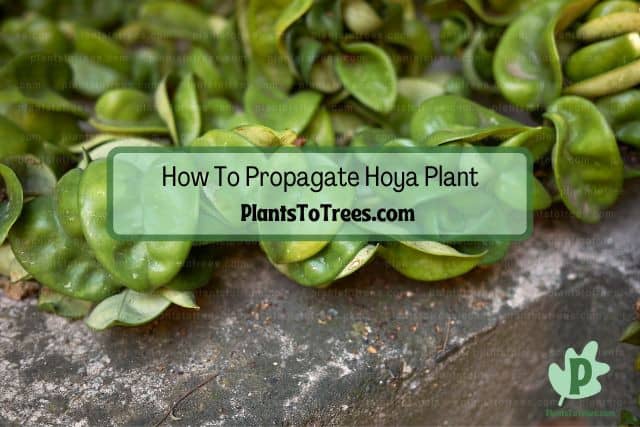
Most houseplant owners know that one of the benefits of many of the most popular houseplants is that you can propagate them. This means you can easily double or even triple the amount of plants you have without opening up your wallet. But how do you propagate Hoya plants?
Propagate your hoya plant with stem cuttings. Locate a healthy stem on your plant that has at least 2 to 3 leaves. For the best results, choose a stem that is about 4 or 5 inches long. Cut the stem using a clean, sharp pair of pruning shears, making sure to cut below a leaf node.
Remove the bottom leaves from the stem so that when the cutting is planted, no leaves will touch the soil. Dip the bottom of the cutting into rooting hormone and then plant in a mixture of vermiculite, perlite, and sand. Set the cutting in a location where it will receive indirect sunlight and water regularly to keep the soil moist, but not soggy.
Another option is to root the cutting in water. Simply place the cutting in a jar filled with distilled or filtered water, and place the plant in indirect sunlight. Make sure to replace the water whenever it starts to look murky or once every week. Repot the cutting in soil once the roots reach about 3 inches long.
Is Hoya Plant Toxic To Humans?
While you may not be planning on eating your houseplant, your children may have other plans. Kids of all ages get themselves into sticky situations just by being kids. As a parent, you have to take matters into your own hands to keep them safe and protected. One way to do this is to make sure a plant isn’t toxic before adding it to your indoor garden.
Hoya plants are not toxic to humans. In fact, no part of this plant poses a risk to humans. However, they can cause allergic reactions in those who have an allergy to the plant. In most cases, hoya plants merely cause contact dermatitis when touched by someone who is allergic to hoyas.
Even though they are not toxic, you should always keep your houseplants out of children’s reach. This is merely a safety precaution that helps to keep your kids, and your houseplants, safe.
Is Hoya Plant Toxic To Dogs?
Even if your dog has never bothered a houseplant before, you should still do your research to find out the toxicity level of the houseplant you want to grow indoors. All it takes is one nibble of the wrong plant to send your pooch to the emergency vet.
Hoya plants are not toxic to humans. In fact, no part of this plant poses a risk to humans. However, they can cause allergic reactions in those who have an allergy to the plant. In most cases, hoya plants merely cause contact dermatitis when touched by someone who is allergic to hoyas.
Is Hoya Plant Toxic To Cats?
When you have cats, whether or not a plant is toxic to felines should be your first concern before you bring it into your home. This becomes even more important when you start to realize the sheer number of houseplants that pose a serious risk to your kitties.
Hoya plants are not known to be toxic to cats, and are actually considered safe for pets and humans. If your cat does consume the hoya, it may still cause a stomach upset or diarrhea if they have eaten a large amount. Thankfully, the gastrointestinal distress typically only lasts a few hours.
Consider keeping your hoya plant out of reach of your pets and children. Even if the plant is completely safe, you still don’t want them eating or bothering the plant. Since hoyas make good hanging baskets, you may want to consider growing these semi-succulent houseplants in that manner to better keep them away from small hands and furry paws.
Related Articles
Fiddle Leaf Fig Plant Care Guide
PlantsToTrees.com is the owner of this article and we first published this on August 22, 2022.
